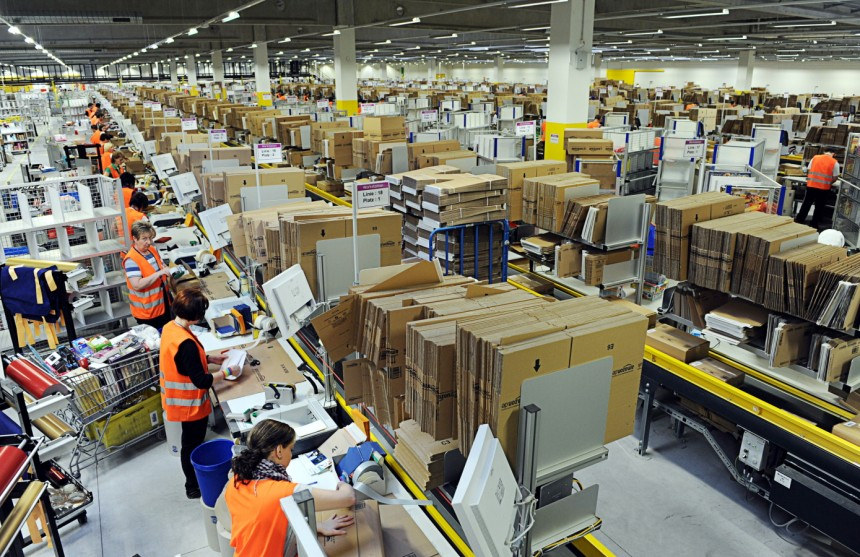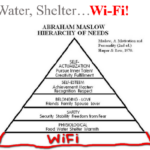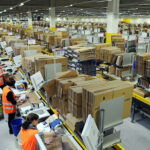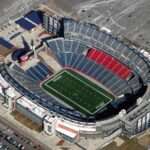I would define specialized deployment areas as Very High Density (VHD) and other specialized deployment areas such as outdoor areas, warehouses, loading docks, industrial environments, garages/barns, executive offices and historical buildings. Those areas that need special design considerations and further scrutiny. We covered Very High Density (VHD) areas in a separate blog so in this blog we will focus on other specialized deployment areas.
Your WLAN Design Standard or Design should include specialized deployment area design requirements such as:
- Identify any other specialized deployment areas on the floor plans such as outdoor deployments, loading docks, warehouses, industrial environments, garages/barns, executive offices, historical buildings and any additional design considerations and requirements. These areas typically pose unique challenges.
- Outdoor deployments/loading docks for example require specifying outdoor APs or enclosures to meet the temperature extremes, wind, liquid, dust and salt spray requirements of the site; are subject to outdoor interference and ever-changing obstructions such as increase or reduction in people, moving vehicles, trees/vegetation changes with seasons, surrounding buildings and terrain; unique AP installation requirements such as discovering vertical mounting assets/poles or specifying them (poles, bollards, etc.) along with specialized mounting hardware/brackets and antennas, discovering cable routes or performing bridge link planning and unique powering/surge suppression requirements.
- Warehouses/garages/barns for example are often made up of heavy concrete and metal that absorb and attenuate wireless signal, have large open areas prone to interference with high ceilings, contain long/high aisles with often rotating stock/material types and stock levels that again absorb and attenuate wireless signal and are often reconfigured in different orientations. Like outdoor deployments, warehouses have unique AP installation requirements but in addition, have unique requirements for drop poles to accommodate high ceiling heights and unique requirements for protecting equipment from damage from forklifts. Warehouses also have the unique challenge of moving forklifts requiring seamless mobility and the use of handheld scanners anywhere from floor to ceiling.
- Industrial areas for example are often similar to warehouses in that they are made up of heavy concrete and metal that absorb and attenuate wireless signal. Industrial areas are also similar to outdoor deployments in that they have unique environmental challenges requiring the selection of the appropriate outdoor AP/enclosure but also add additional challenges of hazardous and potentially explosive locations. Like both outdoor and warehouse areas, industrial areas also have unique AP installation requirements but have the unique challenge of potential interference from generators and electrical motors.
- Executives in executive areas for example may have the expectation of line of sight to Access Points from their office and may have unique client device requirements.
- Historical buildings for example have the challenge of many years and layers of construction that may absorb and attenuate wireless signal more than modern buildings, although modern, energy efficient buildings can have their own set of challenges. In addition, there may be strict preservation requirements that impact AP installation and cable routing, for example APs may need to be hidden or more seamlessly blended into the environment.
- Pre-install Onsite Surveys are required in specialized deployment scenarios to complete the following as applicable:
- Interview staff to truly understand how the area is utilized and may change from day to day, how many people ebb and flow with how many devices, what applications are used, what the bandwidth requirements of the applications are, what devices are used, the capabilities of the devices (2×2, 3×3, 20/40/80 MHz, etc.) and how they are used (stationary/mobile – examples include scanners in a warehouse being used to scan inventory on moving forklifts at variable heights up and down each aisle or tablets in the cab of truck).
- Identify environmental requirements of the site (temperature extremes, liquid, dust, salt spray, hazardous, explosive) and specify required indoor/outdoor APs or enclosures and if active heating or cooling is required in the enclosure.
- Identify building materials, ceiling heights, surrounding buildings/terrain (open, lightly/medium/highly populated), obstructions and any other anomalies such as vehicles, trees/vegetation that could change with the season, anything that could damage equipment that require protections to be put in place, if theft protection might be required. Obstructions can often be used in specialized deployments to your advantage (heavy concrete walls/metal, seats populated with people, etc.) to create smaller cells.
- Perform onsite measurements of actual wall attenuation in representative areas.
- Identify installation restrictions for aesthetics or historic preservation for example APs/antennas must be hidden or skinned to more seamlessly blend into environment.
- Identify AP installation locations or specify them if necessary (poles/bollards for example).
- Identify how APs will be mounted (ceiling, wall, floor, pole), how high, direction and how much tilt/angle.
- Identify specialized mounting hardware, brackets, drop poles, etc.
- Identify specialized external antennas, RF cables and lengths.
- Discover ethernet/fiber cable routes or perform bridge link planning.
- Identify power/surge suppression requirements (POE, AC/DC, Solar, lightning arrestors, ethernet surge suppression).
- Perform “AP on a stick” onsite survey (temporary mount specified APs/Antennas as they actually will be installed) in representative areas of the site to measure actual primary signal/SNR, secondary signal/SNR, noise floor, data rate, throughput, sources of Wi-Fi and non-Wi-Fi interference (spectrum analysis), RTT and Packet Loss, actual wall attenuation (to plug into predictive design software) and to test with actual devices and applications that will be used and how they will be used if possible.
This blog is part of a series on the WLAN Design Standard/Design including High Density, Very High Density and other Specialized Deployment Scenario considerations.







Recent Comments